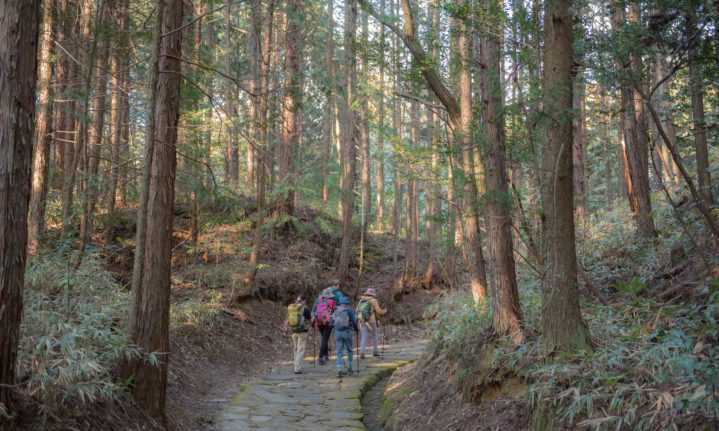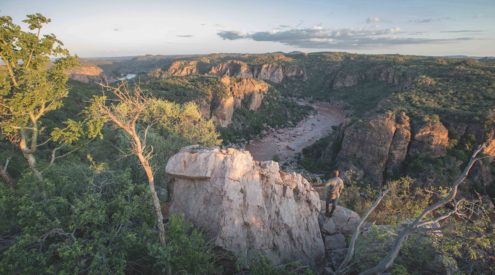In the run-up to the Rugby World Cup, starting this month in Japan, I spent a few weeks exploring the island nation. While vigorous outdoor sport was front of mind (and best of luck to the Boks!), I was also made aware of another form of healthy outdoor recreation: shinrin-yoku or ‘forest bathing’.

Image: Justin Fox
My introduction to the healing nature of this activity (it doesn’t involve leaping into icy natural pools but rather submerging yourself mentally) occurred during a nine-day hike through the forests of central Honshu with Walk Japan (walkjapan.com). The practice of shinrin-yoku, I was told, has the power to counter a host of ailments and modern ills. The idea is simple: walking through nature in a relaxed, mindful way has many calming and rejuvenating benefits.
The concept gained traction in Japan during the early 1980s and has become a cornerstone of preventive healthcare. Millions of islanders now practice shinrin-yoku. Researchers spent years studying the physiological and psychological effects of forest bathing. They discovered that it exposes people to the essential oils, or phytoncides, that trees release. These antimicrobial oils protect trees from germs, but also have human health benefits that include boosting mood and immune-system function, reducing blood pressure and heart rate, decreasing anxiety and depression, improving sleep and creativity, and possibly even helping to fight cancer.
Today, Japan has 62 designated therapeutic woods and dozens of therapy trails. The idea has caught on internationally. Finland advertises itself as a forest-bathing destination. There are forest-therapy guide and certification programmes in the UK, USA and Canada, and there’s a Global Institute for Forest Therapy. Even Kate Middleton, the Duchess of Cambridge, is a fan and the garden she co-designed at this year’s Chelsea Flower Show was inspired by shinrin-yoku.
The Japanese have led the world in recognising again, through the prism of science, the inherent value of leaving old-growth forests intact – if not for the good of the natural world, then for the good of humanity. By finding non-extractive ways to ‘use’ forests, they are indirectly making a further case for the preservation of the world’s forests (as if one were needed).
And so, next time you find yourself near woodland, try the art of ‘bathing’. Walk slowly, empty your mind and allow yourself to engage through the senses: touch, sight, sound, smell and taste. Listen to the birds, smell the soil, study the pattern of leaves, taste the air, touch the hoary bark. Take your time. Breathe deeply. Hold your attention in the present moment to give your body and mind the chance to slow down.
On a recent visit to Knysna I took a forest walk and did just that. The sun was low, sending dusty shafts through the branches. A fragrant muskiness leaked from the soil. I sensed the forest breathing, as though it were one enormous creature. I could feel it growing: all that upward yearning to reach the light of the canopy. A golden softness settled over the forest and I realised that I was losing myself in its leafy embrace. The sense of peace was almost overwhelming.
Next month, look out for our new-look, revamped and redesigned Getaway!



















